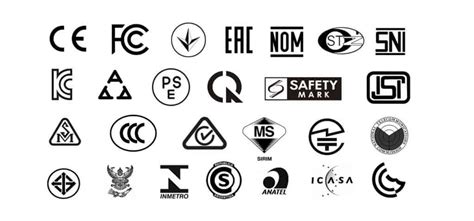Types of Specific markings
1. Electrical and Electronic Component Markings
In the electrical and electronics industry, specific markings are crucial for identifying components, their values, and their functions. Some common markings include:
- Resistor Color Codes
- Capacitor codes
- Integrated circuit (IC) markings
- Polarity markings on diodes and electrolytic capacitors
These markings help engineers, technicians, and hobbyists identify and properly use components in circuit design and troubleshooting.
Resistor Color Codes
Resistors are marked with color bands that indicate their resistance value and tolerance. The standard color code consists of four or five bands, each representing a specific digit or multiplier.
| Color | Digit | Multiplier | Tolerance |
|---|---|---|---|
| Black | 0 | 10^0 | – |
| Brown | 1 | 10^1 | ±1% |
| Red | 2 | 10^2 | ±2% |
| Orange | 3 | 10^3 | – |
| Yellow | 4 | 10^4 | – |
| Green | 5 | 10^5 | ±0.5% |
| Blue | 6 | 10^6 | ±0.25% |
| Violet | 7 | 10^7 | ±0.1% |
| Gray | 8 | 10^8 | ±0.05% |
| White | 9 | 10^9 | – |
| Gold | – | 10^-1 | ±5% |
| Silver | – | 10^-2 | ±10% |
2. Construction Material Markings
In the construction industry, specific markings are used to identify materials, their grades, and properties. These markings ensure that the correct materials are used in the appropriate applications. Examples include:
- Lumber grades
- Steel grades
- Concrete mix designations
- Pipe markings (size, material, and pressure rating)
Lumber Grades
Lumber is graded based on its appearance, strength, and intended use. The most common grading agencies in the United States are the Western Wood Products Association (WWPA) and the Southern Pine Inspection Bureau (SPIB). Some common lumber grades include:
- Select Structural
- No. 1
- No. 2
- No. 3
- Stud
3. Military Markings
Military equipment and vehicles often bear specific markings to identify their purpose, affiliation, and other important information. These markings can include:
- Vehicle identification numbers (VINs)
- Unit designations
- Caliber and ammunition type markings on weapons
- Protective gear ratings (e.g., ballistic protection levels)
4. Hazardous Material Markings
Hazardous materials require specific markings to ensure proper handling, storage, and transportation. These markings communicate the type of hazard and the necessary precautions to be taken. Examples include:
- NFPA (National Fire Protection Association) diamond
- GHS (Globally Harmonized System) pictograms
- UN identification numbers
- DOT (Department of Transportation) placards
NFPA Diamond
The NFPA diamond is a visual representation of a material’s health hazard, flammability, instability, and special hazards. Each category is assigned a number from 0 to 4, with 4 being the most severe.
| Category | Level 1 | Level 2 | Level 3 | Level 4 |
|---|---|---|---|---|
| Health | Irritant | Hazardous | Extreme Danger | Deadly |
| Flammability | Above 200°F | Below 200°F | Below 100°F | Below 73°F |
| Instability | Stable | Unstable if Heated | Shock and Heat May Detonate | May Detonate |
Importance of Specific Markings
Specific markings play a vital role in various industries by:
- Ensuring proper identification and use of components, materials, and equipment
- Promoting safety by communicating hazards and necessary precautions
- Facilitating communication between manufacturers, suppliers, and end-users
- Enabling compliance with industry standards and regulations
- Aiding in inventory management and logistics
Industry Standards and Regulations
Many industries have established standards and regulations governing the use of specific markings. These standards ensure consistency, safety, and compliance across the sector. Some notable organizations that develop and maintain marking standards include:
- ANSI (American National Standards Institute)
- ASTM International (American Society for Testing and Materials)
- IEC (International Electrotechnical Commission)
- ISO (International Organization for Standardization)
- OSHA (Occupational Safety and Health Administration)
Compliance with these standards is often mandatory and can be enforced by regulatory agencies, such as OSHA in the United States.

Frequently Asked Questions (FAQ)
-
Q: What are the consequences of not following specific marking standards?
A: Failing to adhere to specific marking standards can result in safety hazards, non-compliance fines, and difficulty in communication between stakeholders. In some cases, it may also lead to product recalls or legal liabilities. -
Q: How can I learn to interpret specific markings in my industry?
A: Many resources are available to help you understand specific markings, including industry handbooks, online guides, and training courses offered by professional organizations. Consulting with experienced colleagues and referring to the relevant standards can also help you familiarize yourself with the markings used in your field. -
Q: Are specific markings universal across countries?
A: While some marking systems, such as the GHS for hazardous materials, are globally harmonized, others may vary by country or region. It is essential to be aware of the standards and regulations applicable to your location and industry. -
Q: Can specific markings be customized for a company’s internal use?
A: Yes, companies can develop their own specific marking systems for internal use, as long as they do not conflict with existing industry standards and regulations. Custom markings can help streamline internal processes and communication. -
Q: How often are specific marking standards updated?
A: The frequency of updates to specific marking standards varies by industry and organization. Some standards may be reviewed and revised annually, while others may have longer intervals between updates. It is important to stay informed about the latest developments in your industry to ensure ongoing compliance.
In conclusion, specific markings are a critical aspect of many industries, serving to identify, classify, and communicate essential information about components, materials, equipment, and hazards. By understanding and adhering to the relevant marking standards and regulations, professionals can promote safety, efficiency, and compliance in their respective fields.

No responses yet